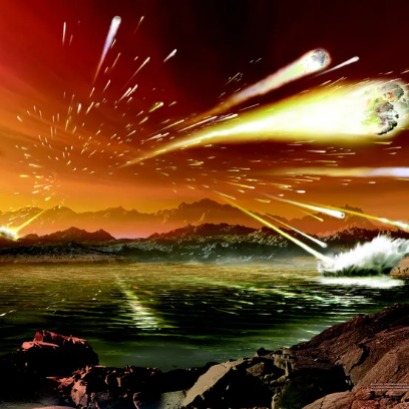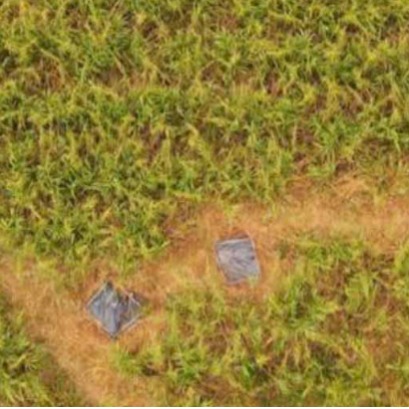
What is the origin of the Amazon? Part of the answer could be related to the asteroid that ended the dinosaurs
On Amazon Day, which is celebrated every year on September 5, discover some of the factors that have joined to form one of the most complex ecosystems on the planet.
When talking about the Amazon, all data are superlative. Considered the largest Brazilian bioma, the largest tropical jungle in the world and the cradle of the greatest biodiversity between the tropical jungles of the planet, according to data from the Ministry of Environment and Climate Change in Brazil, its origin is subject to study for a long time. That is why, understand what is the origin of the Amazon and how the jungle formed is so important for its conservation. Una de las hipótesis para responder a esta pregunta es que el asteroide que cayó en la Tierra al final del período Cretácico, y que habría exterminado a los dinosaurios, también pudo haber sido el punto de partida para el surgimiento de las actuales selvas tropicales en América del Sur, informa un artículo de la revista científica Science.La selva amazónica está presente en nueve países de Sudamérica (Bolivia, Brasil, Colombia, Ecuador, Guyana, French Guayana, Peru, Surinam and Venezuela) and occupies 40 % of the territory of the continent, with an approximate area of ??5 million km². If it were a country, the Amazon would occupy the seventh place in size in the world, the source continues. The limits of the Amazon were recognized on September 5, 1850, day that marks the creation of the province of the Amazon by the Brazilian emperor D. Pedro II. It is also on this date when the Amazon Day is celebrated annually, whose objective is to draw attention to the preservation of the ecosystem. But what is known about the origin of the Amazon and how was it formed? National Geographic inquires about some answers.Could the asteroid that ended the dinosaurs contributing to the creation of the Amazon? According to the journal Science, the origin of the forest as we know it today and its ?impressive biodiversity? was sought in the analysis of 50,000 samples of fossilized pollen and more than 6000 leaves of trees of the Amazon region. This research, carried out by scientists from universities and institutes of Europe, China, United States, United States Part of South America, argues that the impact of the asteroid that ended the dinosaurs affected more gym -type plants (such as conifers), which, according to the source, were a majority in the current Amazon region. In change, the plants of the angiosperms type (which have flowers and fruits) The Western Amazon experienced (mountains that rose, coasts that moved, rivers that changed the course) would have favored speciation explosions , that is, a boom of new species that were evolving, details another article published on the Science website entitled how the Amazon became a crucible life. Text emphasizes that less than 10 million years ago the Caribbean Sea bathed part of the South American continent. At that time, organisms had to adapt to a mosaic of biomes that varied between salty and sweet, aquatic and terrestrial, which increased diversity, he details. The arrival of the ocean It defends the importance of the sea in the formation of the Amazon Bioma. The research published in the Journal of South American Earth Sciences by a Brazilian team led by geologist Roberto Ventura Santos, from the University of Brasilia (UNB), and replicated on the Pesquisa Fapesp website from the south and not only from the north, as already known. This factor adds to the evolutionary interaction of millions of years that has given rise to the unquestionable biological wealth of the Amazon. FAPESPs text indicates that knowledge about the geological and environmental history of Amazonas has been expanded to 65 million years. Until then, thorough studies such as this arrived until 20 million years ago. Sciences article, on the other hand, also reinforces this thesis: I am 100 % sure that, at least twice in the long history of South America, the Caribbean invaded the north coast of the contine In the text. For the defenders of this scenario, the plankton fossils, mollusks and marine fish, as well as current species such as the Amazon Dolphins, provide a powerful support for the emergence of species, continues Science. North America. In the Western Amazon, we have 300 species of trees in a single hectare. The Amazon region, which includes parts of Peru, Ecuador, Colombia and northwest of Brazil, is the most diverse region in the world in terms of plants, concludes Dick. Actually, it is estimated that there are at least 40,000 species of plants, 2500 fish and 425 mammals in the Amazon, according to Fapesp. Anyway, scholars agree that there is still much to investigate when it comes to the Amazon.
IT MAY INTEREST YOU
 Renovations, construction of houses and extensions made of wood gain speed, comfort and efficiency in the country
Renovations, construction of houses and extensions made of wood gain speed, comfort and efficiency in the country
In private neighborhoods, the Coast, the Coast and Patagonia, the choice of homes with dry works is growing. Speed, low environmental impact and energy savings.
 Vida Silvestre and ArgenINTA promote a national consultancy for the restoration of forest landscapes in Argentina
Vida Silvestre and ArgenINTA promote a national consultancy for the restoration of forest landscapes in Argentina
The Argentine Wildlife Foundation and the ArgenINTA Foundation signed a technical cooperation agreement to begin a consultancy aimed at the Restoration of Forest Landscapes (FPR) in the seven forest regions of the country. The work seeks to generate technical and scientific inputs that guide the design of provincial and national restoration programs, in support of the implementation of Law No. 26,331 on Native Forests.
 National, regional and sectoral authorities participated in the opening ceremony of ExpoFerretera 2�25
National, regional and sectoral authorities participated in the opening ceremony of ExpoFerretera 2�25
Buenos Aires, October 2�25 – At the opening ceremony they coincided representatives of the entire hardware value chain. There, the main Sector leaders ratified the strategic role that the spaces of meeting and networking. Furthermore, the second day of the event passed with an agenda full of activities.





















